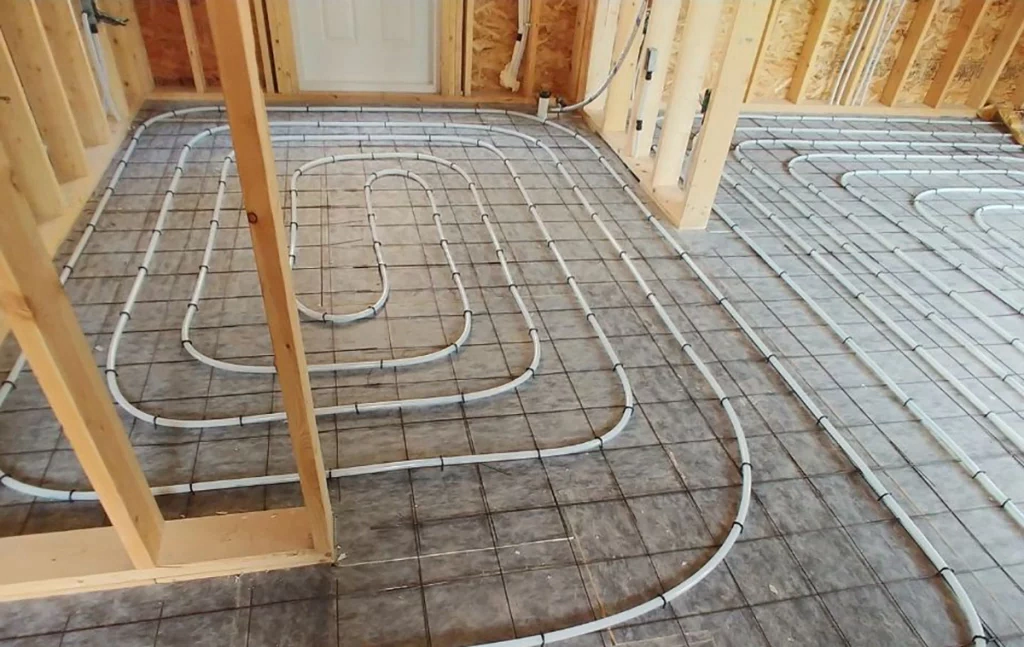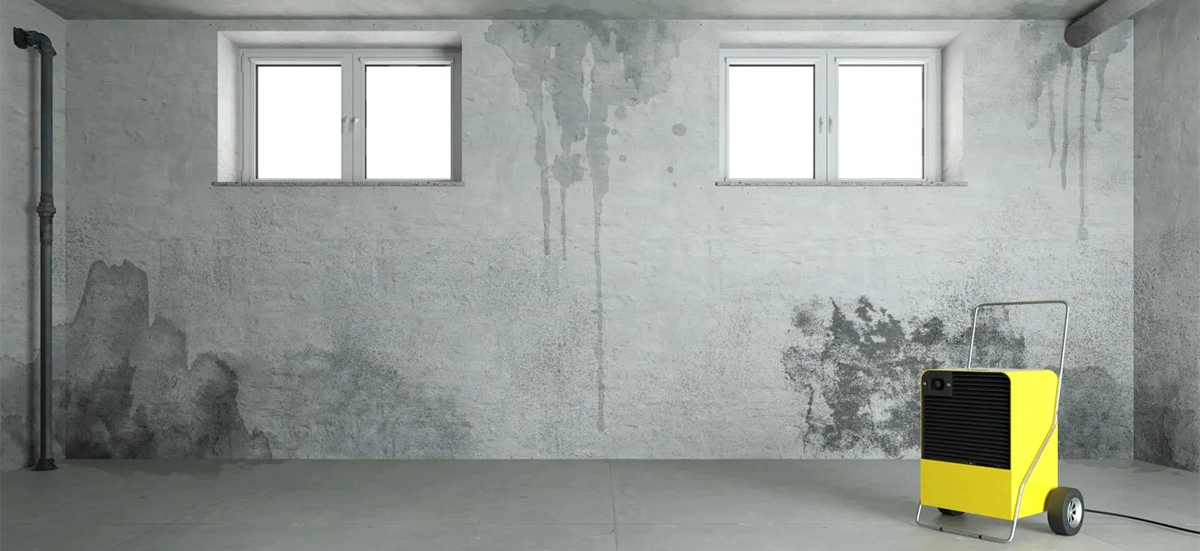Is your basement feeling damp and musty? Are you noticing signs of excessive humidity? Worry not, for we have the ultimate guide on how to dehumidify your basement effectively. A dry and comfortable basement not only prevents mold and mildew but also provides additional living space. In this article, we’ll explore the main signs that indicate your basement needs dehumidification and the best methods to achieve a dry and comfortable environment.
Contents
- 1 What are the Main Signs That Your Basement Needs to be Drained?
- 2 What is the Best Way to Dehumidify the Basement?
- 2.1 Ensure Ventilation of the Basement
- 2.2 Keep the Basement Warm Even During Winter
- 2.3 Sealing Basement Cracks and Openings
- 2.4 Properly Insulating Walls and Floors
- 2.5 Cleaning Air Filters
- 2.6 Inspecting and Cleaning Drain Lines
- 2.7 Use a Natural Dehumidifier: Charcoal Briquettes and Rock Salt
- 2.8 Rethink Storage in the Basement
- 2.9 Install a Ceiling Fan
- 2.10 Install a Dehumidifier
- 2.11 How Long to Dehumidify a Basement?
- 2.12 FAQ about How to drain a basement
What are the Main Signs That Your Basement Needs to be Drained?
Before we jump into the solutions how to dehumidify a basement it’s crucial to recognize the signs that your basement’s humidity levels are out of control. Here are the main signs that indicate your basement needs to be dehumidified:
- Musty Odors: A distinct, musty smell often indicates the presence of mold or mildew, which thrive in humid environments.
- Visible Mold Growth: If you spot mold patches on walls, floors, or belongings, it’s a clear indication of high humidity levels.
- Condensation: Beads of water forming on windows, pipes, or surfaces are a sign of excessive moisture in the air.
- Warped Wood: Wooden furniture or structures that appear warped or swollen are indicative of prolonged exposure to humidity.
- Peeling Paint or Wallpaper: Moisture can cause paint and wallpaper to peel or bubble, leading to an unsightly appearance.
- Allergies and Respiratory Issues: Excessive humidity can worsen allergies and respiratory problems due to the growth of allergens like mold and dust mites.
What is the Best Way to Dehumidify the Basement?
When it comes to dehumidifying your basement effectively, a combination of proactive measures can make a significant difference in reducing excess moisture and creating a more comfortable environment. Let’s delve into the best methods to achieve a dry and comfortable basement environment:
Ensure Ventilation of the Basement
Proper ventilation is a fundamental step in controlling humidity levels. Regularly open windows and doors to allow fresh air circulation, especially during periods of low humidity. If your basement lacks natural ventilation, consider using exhaust fans or installing vents to facilitate air movement.
Keep the Basement Warm Even During Winter
Cold air is less capable of holding moisture, which can lead to condensation in your basement. Maintain a consistent temperature in your basement, even during the colder months. Using space heaters or incorporating your basement into your home’s heating system can help prevent temperature fluctuations that contribute to excess humidity.

Sealing Basement Cracks and Openings
Tiny cracks and gaps in your basement’s walls, floors, and foundation can serve as entry points for moisture. Regularly inspect and seal these openings using appropriate materials such as caulk or weatherstripping. By preventing water infiltration, you’ll minimize the potential for excess humidity.
Properly Insulating Walls and Floors
Adequate insulation not only helps regulate temperature but also prevents condensation on surfaces. Insulate walls, floors, and pipes using insulation materials suited for your basement’s specific needs. Proper insulation reduces the likelihood of moisture buildup on cold surfaces.
Cleaning Air Filters
Regularly clean and replace air filters to ensure optimal air circulation and filtration. Clean filters not only promote better air quality but also help reduce excess moisture in the air.
Inspecting and Cleaning Drain Lines
Blocked or clogged drain lines can contribute to excess moisture. Regularly inspect and clean these lines to ensure proper drainage and prevent water accumulation in your basement.
Use a Natural Dehumidifier: Charcoal Briquettes and Rock Salt
Charcoal briquettes and rock salt are natural dehumidifiers that can help absorb excess moisture from the air. Place bowls of charcoal briquettes or containers filled with rock salt in your basement. These materials have the ability to naturally absorb humidity, contributing to a drier environment.

Rethink Storage in the Basement
Consider elevating your belongings off the floor and using shelves or pallets to keep items away from potential moisture. Proper storage organization can significantly impact basement humidity. Cluttered and poorly organized storage can restrict airflow, leading to pockets of stagnant air. By rethinking how you store items in the basement, you can promote better ventilation and reduce humidity.
Install a Ceiling Fan
Installing a ceiling fan in your basement can improve air circulation, which is essential for effective dehumidification. The increased airflow helps in distributing air evenly throughout the space, discouraging the buildup of moisture and mold.
Install a Dehumidifier
One of the most efficient ways to dehumidify a basement is by using a dedicated dehumidifier. These appliances are designed to extract moisture from the air, maintaining optimal humidity levels. Depending on the size of your basement, you can choose from various capacities of dehumidifiers to suit your needs.
Dehumidifying your basement requires a combination of strategies to effectively control moisture levels. By inspecting and cleaning drain lines, using natural dehumidifiers, reorganizing storage, installing a ceiling fan, and utilizing a dehumidifier, you can create a more comfortable and healthier living space in your basement.
How Long to Dehumidify a Basement?
The time it takes to dehumidify a basement varies based on several factors, including the size of the basement, current humidity levels, and the effectiveness of the dehumidification methods employed. Generally, noticeable improvements can be observed within a few days to a week of implementing dehumidification measures. However, achieving optimal humidity levels may take a few weeks or more, depending on the severity of the issue.
In conclusion, transforming your basement from a damp and uncomfortable space into a dry, inviting area is achievable by following these comprehensive dehumidification steps. By recognizing the signs of high humidity, ensuring proper ventilation, utilizing natural dehumidifiers, and considering advanced solutions like dehumidifiers, you’ll create a basement that’s free from moisture-related issues. Remember, a dry basement is not only more pleasant to spend time in but also helps safeguard your home’s structural integrity. Don’t let humidity hold your basement back—take action today!
FAQ about How to drain a basement
While air conditioners can help reduce humidity, they are not as effective as dedicated dehumidifiers. Dehumidifiers are designed specifically to remove moisture from the air, whereas air conditioners primarily focus on cooling.
Aiming for a humidity level between 30% and 50% is generally recommended for basements. This range helps prevent mold growth and maintains a comfortable environment.
It’s advisable to clean or replace the filters every two to three months, depending on the frequency of use and the manufacturer’s recommendations.
Yes, natural methods include using items like charcoal briquettes and rock salt to absorb moisture from the air. However, these methods might not be as effective as mechanical dehumidifiers.
Running the dehumidifier all year-round depends on your climate and basement conditions. In humid areas, it’s common to use it consistently, but in drier climates, you might only need it during humid seasons.



